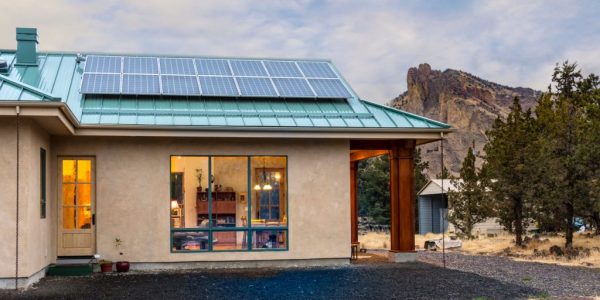Green Building 101

Sustainable building (also called “green building”) offers great opportunities for reducing waste and saving money, energy and natural resources, resulting in a better environment for all of us. Sustainable building makes sense – it is more than just a “feel good” factor.
The main principles of green home building are:
- Optimize the use of the sun
- Design a durable and energy-efficient home
- Create a healthy living environment
- Reduce energy use in the home
- Conserve land and natural resources
Optimizing the sun means using the power of the sun to assist in heating and lighting our homes. There are two types of solar use: passive and active. Passive solar use in our region means orienting and designing the home to take advantage of the Southern exposure to reduce the need for artificial lighting or heating. Active solar refers to solar electric (photovoltaic, or PV) panels that produce electricity and solar water heaters that pre-heat the water to reduce the need for outside energy.
The object of designing a durable and energy-efficient home is to reduce maintenance, repair and replacement and the demand for resources and energy. This can be accomplished by designing and building a solid foundation, walls and roof and utilizing strategies to reduce damage by moisture, pests, and other factors that can compromise the building. Windows and other components (such as insulation, heating systems, flashing and weather barriers) all can improve the energy-efficiency and durability of the home.
Creating a healthy living environment not only saves in long-term health care costs, but makes everyday living more pleasant and enjoyable. Good indoor air quality (IAQ) can be achieved by using natural and non-toxic finishes and materials, installing systems that provide fresh and conditioned air (especially important in tight, energy-efficient homes), and taking measures to prevent mold, hazardous fumes and other pollutants.
The most visible savings come from energy-efficiency, as monthly utility bills can be significantly reduced by installing energy-efficient heating systems, appliances, lighting, and anything else that uses energy. There are many resources for making your home more energy-efficient – for example, Energy Trust of Oregon offers free evaluations and energy saving kits and most power companies have programs to help home owners reduce their energy use.
One of our most precious resources in Central Oregon is water. We can conserve water by installing water-saving devices inside our home (e.g. low-flow shower heads and toilets) and using xeriscaping and other water reduction methods in our landscaping. We can also reduce the need for other natural resources by using materials that are sustainable and quickly renewable. Using salvaged and refurbished materials and components save natural resources, as does using recycled content (especially post-consumer) and materials or components that can be easily recycled at the end of their life. Conserving land means being thoughtful about the siting of the home by paying attention to preserving natural habitat and minimizing the house’s impact and footprint on the environment.
For more general information on green building, follow this link to the EPA site.